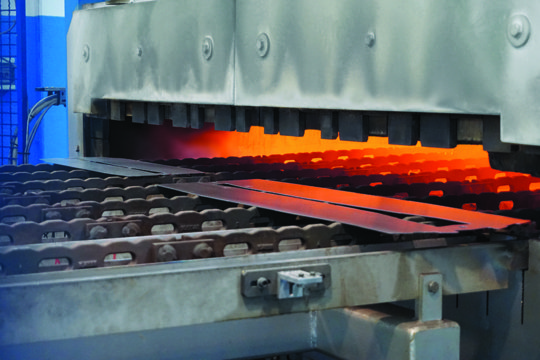Heat treatment is a crucial method used in metallurgy to modify the properties of metals by subjecting them to controlled heating and cooling cycles. This process is integral in refining the internal structure of metals to enhance their mechanical properties, making them suitable for various applications across industries.
The heat treatment process involves a series of controlled steps to modify the microstructure of metals. It typically includes:

Steel, being one of the most versatile and widely used metals, undergoes specific heat treatment processes tailored to its composition and intended application. The treatment of steel involves precise temperature control and techniques to achieve desired properties.
For instance, carbon steel requires meticulous control of heating temperature, soaking time, and cooling rates to attain the desired hardness and strength. Alloy steels demand even more precise control in heating and cooling to achieve specific properties like increased wear resistance or improved corrosion resistance.
The heat treatment of steel profoundly influences its properties. Heat-treated steel exhibits enhanced mechanical characteristics such as:
In summary, heat treatment is a fundamental process that transforms the properties of metals, especially steel, to meet specific performance requirements in various industries. By altering the microstructure of steel through precise heating and cooling cycles, heat treatment imparts desired mechanical properties, ensuring its suitability for a wide array of applications.
Heat treatment plants stand as pivotal facilities within the metallurgical industry, dedicated to altering the properties of metals through controlled heating and cooling processes. These plants are equipped with an array of specialized tools and machinery essential for executing various heat treatment methods.
The layout of a heat treatment plant is meticulously designed to ensure precision and efficiency in the treatment of metals. It houses an assortment of equipment such as:
Heat treatment plants operate on a systematic approach, following specific procedures tailored to different types of metals and desired outcomes. Skilled technicians oversee the treatment process, adhering to stringent guidelines to achieve precise metallurgical transformations.
The fundamental objective of heat treating metals is to tailor their properties for specific applications across industries. The process optimizes various mechanical characteristics of metals:
Heat treatment plants serve as essential hubs in the metallurgical realm, orchestrating controlled thermal processes to transform metals. Through meticulous procedures and specialized equipment, these plants facilitate the optimization of metal properties, ensuring their suitability for a myriad of industries and applications.
You might also be interested in: